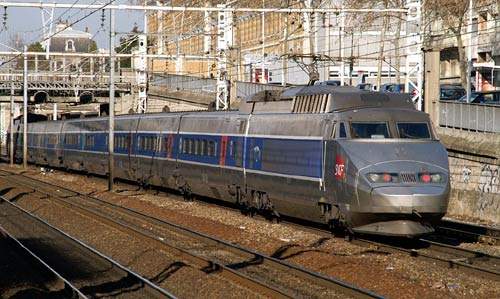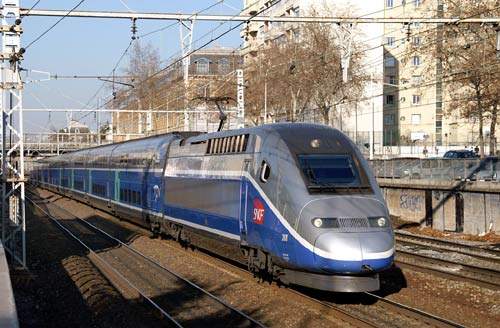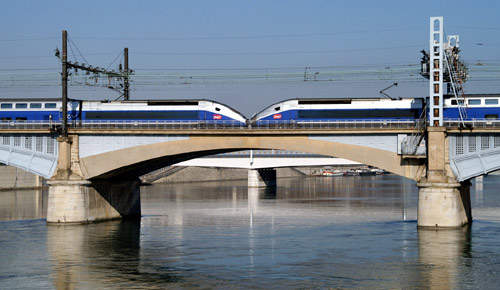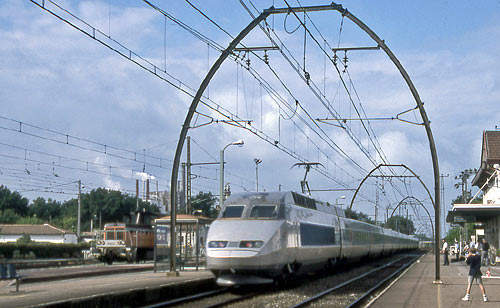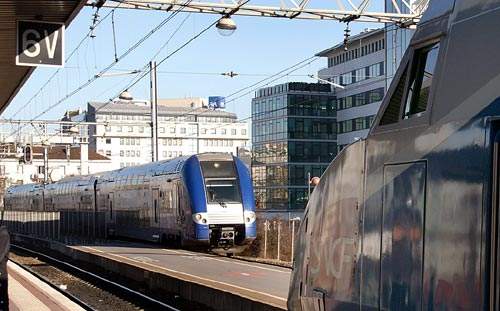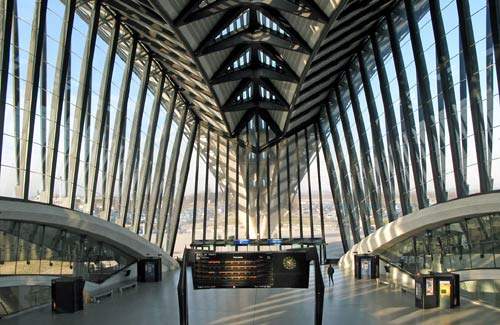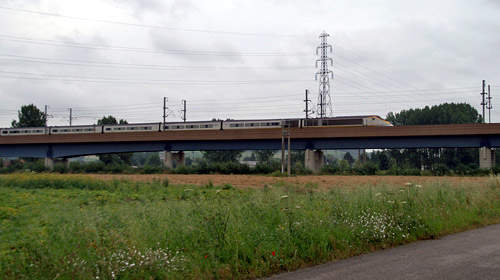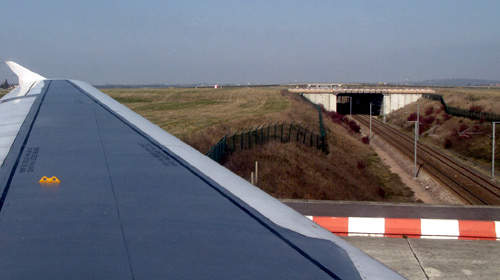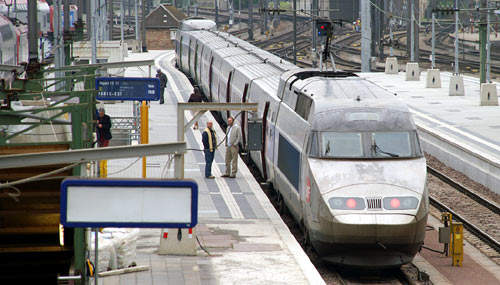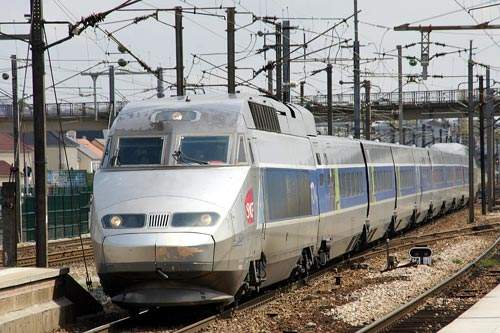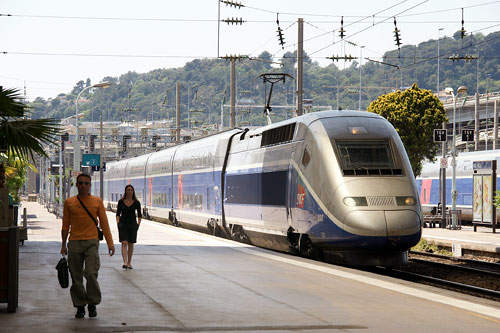From its first service in September 1981, the French train à grande vitesse (TGV) has set a pace in European high-speed (initially above 200km/h) rail operations.
Not only has the TGV developed with successive fleet orders, the dedicated high-speed network on which they are primarily designed to run, the lignes à grande vitesse (LGV), continue to expand within France and across borders.
By mid-2008, the French government had made a new commitment to high-speed rail which, if carried through, could see the format break out from the main Paris-centred radial routes, well on the way to being a true national network.
The main endeavour of the project is to strengthen services for the towns of Bordeaux, Libourne, Angoulême, Poitiers, Tours, Chatellerault, Orleans and Paris, and cut down on commuting time.
As the current line is already congested, the new line will offer free circulation slots for TER train services and freight. The new line provides a western inter-connection between the Spanish and French rail networks.
The Tours-Bordeaux journey will be covered now in 50 minutes; Paris-Bordeaux in 2h10 (3 hours at present), Angoulême-Bayonne in 2h05 (2h30 at present), Poitiers-Dax in 2h30 (3 hours at present) and Lille-Bayonne in 6 hours (6h50 at present).
Construction of the new 302km rail line and 39km of connections between Tours and Bordeaux for TGVs operating at 300km/h will be completed in two phases. Phase 1 involves the construction of a new line section between the north of Angoulême (Villognon) and Bordeaux (La Grave d’Ambarès). Phase 2 involves the construction of a new line section between Tours and the north of Angoulême.
The project
The TGV/LGV system evolved from several projects aimed at cutting rail journey times, with hover and magnetic levitation systems and gas turbine propulsion being discarded along the way.
Assuming the performance available from high-power electrically driven trainsets and not having to account for mixed use, the new twin-track lines could be driven across country, following the landscape with a severity of gradients that previous trains could not handle.
As the aim was to link the largest centres only, intermediate stations, deviations for smaller communities and related track work could be kept to a minimum.
Although at the outset environmental consciousness when the first TGVs entered services was not as prevalent as it has since become, even with the power consumption of high-speed operation, in relative terms the LGV network remains perceived as environmentally sound compared to short and medium-haul air travel or mass use of private cars.
With reduced centre-to-centre journey times and attractive pricing policies, wherever the TGV network has expanded, so domestic air traffic has fallen or air routes have ceased completely.
A call for tenders for the construction phase of the project under a concession agreement took place in 2006. A public utility inquiry for the Tours-Angoulême line was conducted in 2007 and formalisation of the concession agreement by contract was carried out 2008.
Infrastructure
Unlike the Japanese Shinkansen counterpart that largely evolved due to the limitations of narrow gauge lines and thus became an entirely separate network, LGV was created and developed within the context of the wider SNCF operation. Standard LGV electrification is 25kV AC, although to allow co-operation with the other established SNCF system, 1,500V DC, all TGV sets are at least two-system.
Access for other types is being built into later routes such as Perpignan-Figueres due to open in 2009. However, most LGV is for use by trains of the TGV range only. The trains can use existing lines, notably for access to cities and established stations, with many classic routes being substantially reworked for regular TGV use. To prolong the life of track formations, strict 17t axle weight limits are imposed where TGVs run.
While many communities lobbied to be included in the LGV network, mindful of the noise and visual intrusion of high-speed rail operations, SNCF adopted a range of measures aimed at reducing noise disturbance in adjoining new lines.
In order of opening, principal domestic high-speed lines as of 2008 are:
- LGV Sud-Est (Paris-Lyon) – 1981
- LGV Atlantique (Paris-Le Mans and Tours) – 1990
- LGV Rhône-Alpes (Lyon-Valence) – 1992
- LGV Nord (Paris-Lille/Channel Tunnel) – 1993
- LGV Méditerranée (Valence-Marseille) – 2001
- LGV Est (Paris-Baudrecourt) – 2007
To link LGV Sud-Est and LGV Nord, the Interconnexion (Jonction) Est, effectively an eastern bypass of Paris and link to Charles de Gaulle airport and Disneyland Paris, opened in 1994.
It has since been connected to LGV Est. A tribute to the infrastructure as well to the capability of the rolling stock, LGV Est was the setting for the world rail speed record for a wheel-driven train of 574.8kph (356mph) in April 2007.
The network’s outstanding safety record has been greatly influenced by the use of the same vehicle type, the absence of at-grade junctions and level crossings, also through lines being fully fenced and sophisticated sensors fitted to detect obstacles entering the permanent way.
LGV have been highly successful and profitable, although some stations have not shared that popularity, notably Haute Picardie on TGV Nord and the elaborate Gare de Saint-Exupéry (at Lyon airport, originally Satolas). As at Calais-Fréthun, some purpose-built TGV stations have relatively sparse services.
Rolling stock
Although the initial TGV Sud-Est batch was built for 270km/h (168mph), but most TGV have a maximum service speed of 300km/h (186mph) or 320km/h (199mph). Newer lines such as LGV Est are built for speeds up to 350km/h. The most significant change over the original format was the TGV Duplex (double deck) variant, built in several batches since 1995 and still in production.
A response to constantly rising demand on the first and busiest LGV, Paris-Lyon, the Duplex sets powered variously by Réseau or differently styled Duplex power cars can carry 545 passengers. Such is demand that the format has spread to other LGV and on LGV Sud-Est, pairs of Duplex are deployed to increase route capacity. In June 2007 Alstom won a €2.1bn contract to supply SNCF with 80 more Duplex sets for delivery from 2009 to operate services extending from LGV Est.
A notable development for the French network from 2007 was the introduction of trains from outside the Alstom-built TGV family in the form of specially modified DB ICE3 sets for working services over TGV Est from Paris into Germany.
The next generation of high-speed trains from builder Alstom is the AVG (Automotrice à Grande Vitesse) officially unveiled at their La Rochelle Aytré factory in February 2008. It features distributed power rather than separate power cars and with service speeds of 360km. The launch customer with an initial order for 25 sets is new Italian open access operator Nuovo Trasporto Viaggiatori. In spite of this non-French debut, AVG seems destined to be the future motive power format for the LGV network.
Signalling and communications
The TGV nerve centre is in northern France, situated near the maintenance depot close to Lille Flandres station. Such is the power generated by a TGV that each has to be fitted with an interference current monitoring unit to ensure electrical interference does not exceed safe levels.
Trains are fitted with automatic train protection systems which automatically apply the brakes if a signal is not responded to or passed at danger. As speeds render lineside signals ineffective, TGV sets are equipped with in-cab signalling, the TVM430 system, which monitors progress and informs the driver of the maximum speed possible to maintain headways between trains.
The future
More LGV are under construction and others are in varying stages of planning by infrastructure organisation Réseau Ferré de France (RFF).
After some uncertainty about the cost-benefit aspect of completing LGV Est, the success of the first phase and the stimulus of creating a trans-Europe high-speed line indicate that the 106km section from Baudrecourt to Vendenheim near Strasbourg will be ready by 2015.
Part of the environmental measures of the new Nicholas Sarkozy government, in June 2008 a commitment was made to add 2,000km (1,250 miles) of new LGV to the present network by 2020, albeit with some already planned or under construction like LGV Est Phase 2 which should open by 2015.
New lines will include Le Mans-Rennes and Tours-Bordeaux (LGV Atlantique extensions); Montpellier-Perpignan and Nimes-Montpellier by-pass (part of Paris-Barcelona-Madrid), also a second arm of the LGV Rhine-Rhône project.
In some cases, dates are identified, with others awaiting detailing such as Marseilles-Nice and a Paris-Clermond-Ferrand project that will provide a second LGV route between the capital and Lyon. There is an intention to have a new programme of LGV expansion in place for beyond 2020 that will include domestic and cross-border routes.
The Angoulême-Bordeaux section is scheduled to be opened for traffic in 2013 and the Tours North-Angoulême section in 2016. The complete line will cost around €4.785bn. Public partners including the French state, European and local authorities and the RFF are funding the new line.

